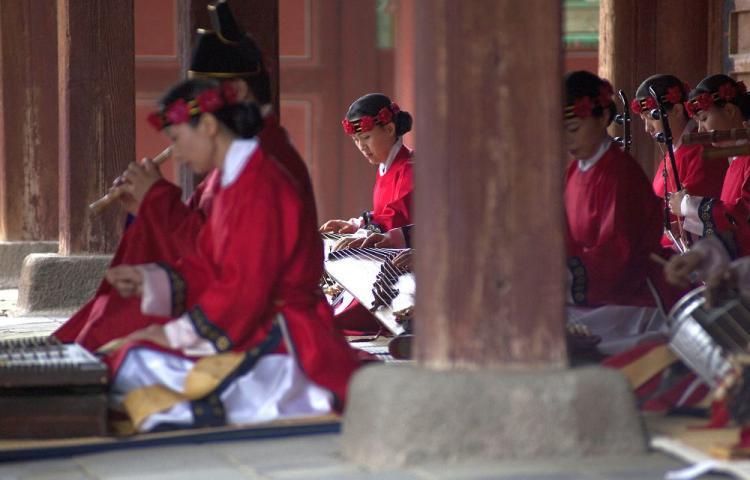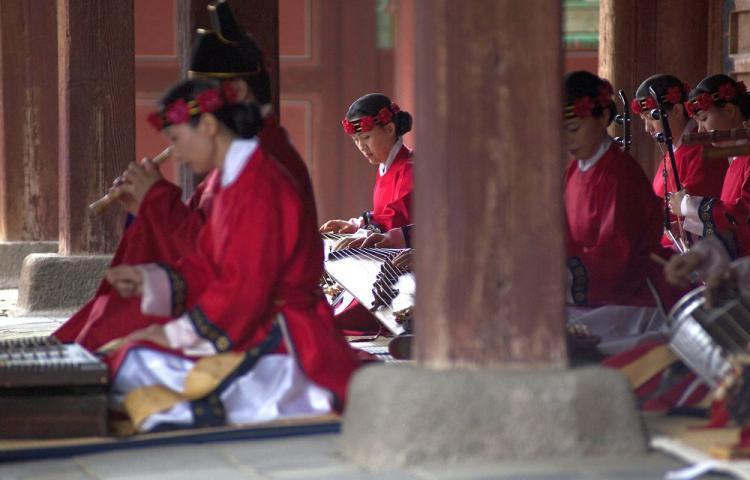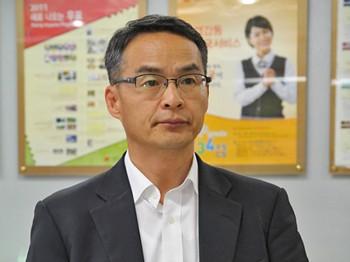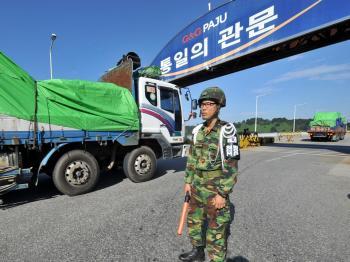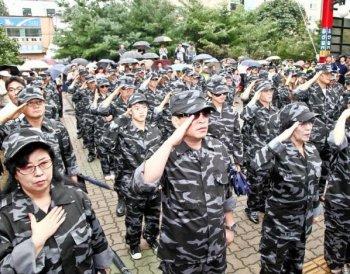Autumn Concerts Revive South Korean Traditions
It is early morning, approximately 200 people fill the small courtyard of an ancient wood and stone palace.
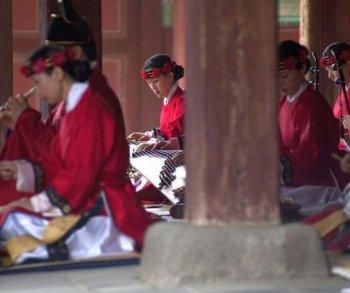
South Korean musicians perform traditional music in a courtyard of the 500-year-old Changgyeong Palace in Seoul, South Korea. The concert was this year's last in a series of traditional early morning concerts performed in the palace in autumn. Jerrod Hall/The Epoch Times
|Updated:

